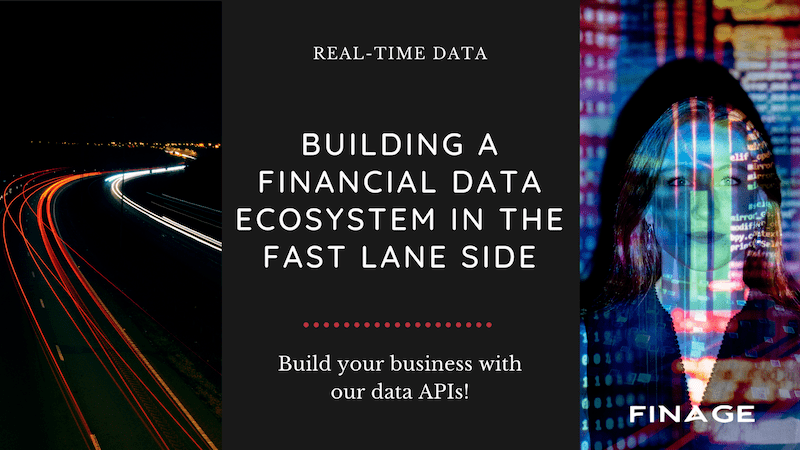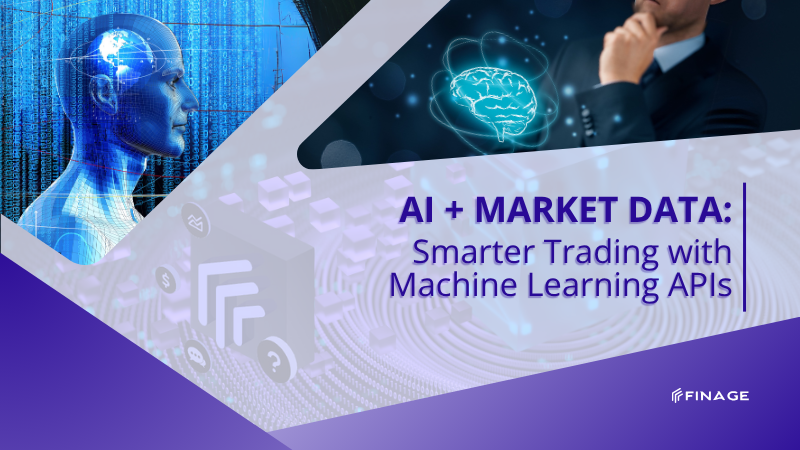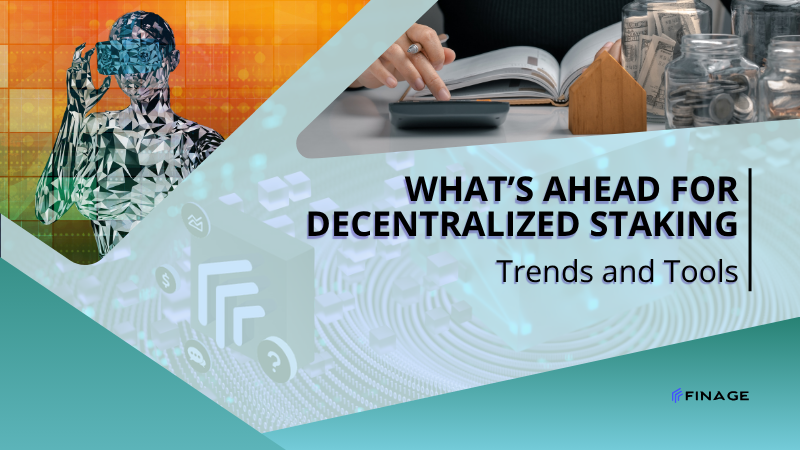Building a Financial Data Ecosystem in the Fast Lane Side
8 min read • October 14, 2021

Introduction
In today's blog post, we have mentioned how Plaid Quietly Builds a Financial Data Empire and our experience with Financial Data in the Fast Lane with details.
Table of Contents
Building a Financial Data Ecosystem in the Fast Lane Side
Regulatory Destiny
Security Capture
Build, Then Buy
Business Model Agility
Financial Data in the Fast Lane
Final Thoughts
If you've ever used your phone to complete a purchase, apply for a loan, or make an investment, there's a good chance it was facilitated by Plaid. As an infrastructure technology product, Plaid's work is mostly done behind the scenes. But that doesn't make it any less important than the apps it empowers.
Since it opened five years ago, Plaid has connected nearly two thousand financial applications to almost every major financial institution. What once started as a simple consumer payment API has grown into a robust platform that it licenses today, to the point where it offers developer tools to perform bank-to-app data transfer. Examining the numbers, it's clear that Plaid has gained trust from banks and start-ups by merging the data divide between the two. To understand its current scale, this post focuses on the strategy and regulation underlying Plaid's growth, as well as the potential for future product expansion.
Regulatory Destiny
Plaid's competitive advantage comes from being a door lifter in an otherwise discrete banking system. Meanwhile, the idea for the company came about when the founders ran into certain issues while creating a consumer finance app. Within the closed banking system of the US, financial institutions have a limited incentive to provide the technology that enables applications to access a user's data. Doing so would overthrow the monopoly banks that currently rely on consumer financial services. In addition, Plaid had to play a little hopscotch and program their own integration with the banks. This also resulted in a few surprisingly useful lines of code.
While the US is lagging behind Europe in initiatives towards open banking, that will likely not be the case forever. Directives like PSD2 in the European Union will make open banking practices a standard rather than an option. He tried to increase the flow of data in banks. As data sharing becomes the status quo, third-party providers have a greater opportunity to compete with banks by opening new business models based on account consolidation. While banks dominate in terms of scale, fintech companies better understand what customers really want. Selection and control of data. In a market that relies on digital services, no bank wants to be the one to say to its customers, "Sorry, you can't use this product on us". Given a series of upcoming mandates, financial institutions are having a hard time pursuing in-house innovation or following the M&A path to stay relevant.
Security Capture
More open banking for customers comes with more trust and more risk. Perhaps the greatest trade-off exists in transactions where users benefit from efficient login and retrieval processes (i.e. entering bank username and password vs entering card credentials), assuming potential externalities of unauthorized fraud. With increasing data fluidity, organizations have resorted to multi-factor authentication steps such as photo ID in addition to bank credentials.
Plaid was able to build a reputation of proficiency by applying access controls, routine testing, and encryption standards to verify its reliability. Error insecurity is never tolerated, as a single breach would undermine the customer's trust and put the platform at the margins of the API providers. Given that open banking applications are in their infancy, we still haven't come across a large-scale, sophisticated anti-fraud solution that could be the x-factor of reducing the risk of third-party aggregation. Within this innovation process lies an opportunity for Plaid to partner with next-generation anti-fraud software such as facial recognition providers.
Build, Then Buy
Filled with finance and a handful of seasoned advisors, Plaid began tapping its capital earlier this year by acquiring Quovo, a similar platform that collects consumer financial account data. Basically, Quovo is like an Alexa that organizations can put in consumers' wallets, answering questions about how they spend their money, where they invest, and what their finances are. While Plaid mainly focuses on banking and payments, Quovo collects data from instruments such as brokerage firms, student loans and mortgages. Plaid already provides a platform for developers to access financial data. But the acquisition of Quovo expands its reach into investment and lending areas. With Quovo building the ground with its brokerage and asset management services, Plaid leverages its expertise to further develop its data access stack.
Business Model Agility
One of Plaid's greatest strengths to date has been its ability to adopt additional use cases. After early success in payments, it quickly rolled out its offering to a series of new products, each with access and aggregation tools built from the ground up. As banks and fintech companies continue to compete for consumers' money, new products and services will inevitably be created that will give Plaid more ground to expand its market.
Plaid has already proven to be a good business model based on data access and aggregation. But waiting to be implemented is a really good business model based on spreading data across products. The concept isn't really new, as enterprise companies have been releasing analytics products for years. The difference between the two is the sheer scale of financial data Plaid can translate, as well as the opportunity to angle consumers. Once Plaid's influence on data flow solidifies, it can work to harden individual users of the apps it licenses. If the data gives meaning to the ethos of contemporary consumers, then Plaid has been ordained as being it.
Financial Data in the Fast Lane
The information we use to make investment decisions today hasn't changed much over the years. What has changed is how we collect, connect, store and access this information. During our school years, the Professor of Macroeconomics talked about technology to reduce greenhouse emissions to a large extent. This technology will eliminate time spent idling at toll booths. While I hated my undergraduate degree in Operations Management and admitted that the impact of this technology would reduce pollution, we had heard that the reduction in commute time was an even greater benefit. Less time spent commuting meant more time spent with family, hobbies, and work.
One year after these experiences, I was with a friend of mine who demonstrated this technology in action. As we approached a toll booth, he pulled out a box and held it up against the windshield that opened the toll box. You do not need to stop, withdraw money and hand the money to the cashier. This magical little device handled the whole process and allowed us to move faster. This EZ Pass concept and similar advances in technology are key to allowing markets to run more efficiently and individuals participating in markets to be more efficient.
As content sellers, our customers expect comprehensive, predictably high-quality content that is a top priority for our services. Equally important is metadata and technology of access to information. Without quality metadata and activation technology, we expect it at the box office. Quality metadata enables automation to speed up the connection of different datasets. Metadata describes content without needing to consume every data point and news article. Metadata allows us to program our models to run in the background and alert us only when an action is needed.
For example, Moody's Analytics NewsEdge™ solution accesses more than 19,000 news sources that translate into more than 500,000 stories every day. Within seconds, our natural language processing technology delivers clean, accurate, and standardized metadata that is used to inform decision-making. We do this by making sure our models know the difference between a story written by Dow Jones and a story about the main NewsCorp. Our technology goes beyond just labeling a story about FDA approval of a drug, adding context to metadata, metadata also provides where the drug is in the approval process, at what stage. This is quality metadata.
Working hand-in-hand with metadata is enabling technology. Without modern easy-to-use accessibility and distribution, information is still stuck in a traffic jam trying to reach a toll booth. We long ago left dial-up modems behind, but most of us still rely on 30-year-old technologies like FTP to move our data. The modern equivalent would be firms using cloud-to-cloud replication of data, creating greater efficiency and reducing both operational and technology burden. As much as EZ Pass allows us to shorten our travel time, advances in natural language processing and cloud computing are giving us fast ways to use and consume information more efficiently. At Moody's Analytics, we are focused on providing solutions that help our clients make better decisions and make those decisions timelier to address their business priorities.
Final Thoughts
In an ever-evolving industry, Plaid has set itself apart by supporting the backbone of our digitally supported financial system. As a brand leader in Fintech, she will continue to benefit from the acceleration of digital financial products and have the opportunity to do more herself. We hope that this blog post will be beneficial for you. We will continue to create useful works in order to get inspired by everyone. We are sure that we will achieve splendid things altogether. Keep on following Finage for the best and more.
You can get your Real-Time and Historical Market Data with Finage free Market Data API key.
Build with us today!
Claim Your Free API Key Today
Access stock, forex and crypto market data with a free API key—no credit card required.

Stay Informed, Stay Ahead
Finage Blog: Data-Driven Insights & Ideas
Discover company news, announcements, updates, guides and more


